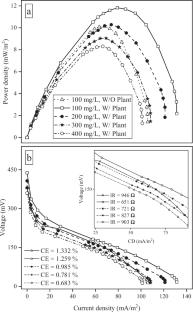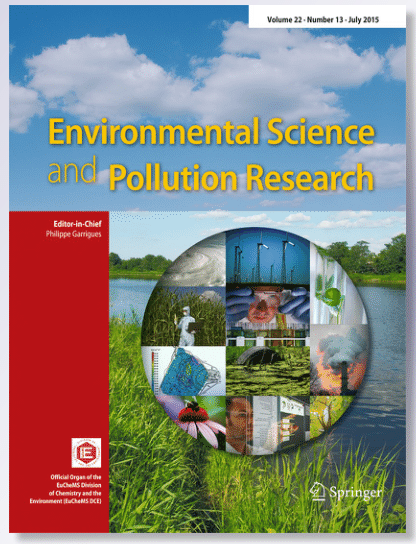Kinetic study on the degradation of Acid Red 88 azo dye in a constructed wetland-microbial fuel cell inoculated with Shewanella oneidensis MR-1
Abstract
Removal of Acid Red 88 (AR88) as an azo dye from the synthetic type of wastewater was studied in a laboratory-made constructed wetland microbial fuel cell (CW-MFC) inoculated with Shewanella oneidensis MR-1 (SOMR-1). Plant cultivation was implemented using a typical CW plant known as Cyperus alternifolius. The complexity of the SOMR-1 cell membrane having different carriers of electrons and H+ ions gives the microbe special enzymatic ability to participate in the AR88 oxidation link to the O2 reduction. Nernst equation developed based on analyzing the involved redox potential values in these electron exchanges is describable quantitatively in terms of the spontaneity of the catalyzed reaction. Power density (PD) at 100 mg/L of the AR88 under closed-circuit conditions in the presence of the plant was 11.83 mW/m2. Reduction of internal resistance positively affected the PD value. In determining degradation kinetics, two approaches were undertaken: chemically in terms of first- and second-order reactions and biochemically in terms of the mathematical equations for rate determination developed on the basis of substrate inhibitory concept. The first-order rate constant was 0.263 h−1 without plant cultivation and 0.324 h−1 with plant cultivation. The Haldane kinetic model revealed low ks and ki values indicating effective degradation of the AR88. Moreover, the importance of acclimatization in terms of the crucial role of lactate was discussed. These findings suggest that integrating the SOMR-1 electrochemical role with CW-MFC could be a promising approach for the efficient degradation of azo dyes in wastewater treatment.


 求助内容:
求助内容: 应助结果提醒方式:
应助结果提醒方式:


